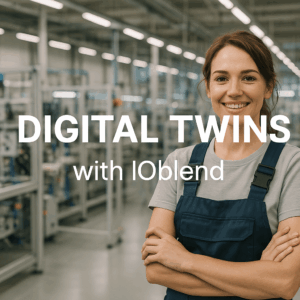Hello folks, IOblend here. Hope you are all keeping well.
There is one thing that has been bugging us recently, which led to the writing of this blog. While working on several data projects with some of our clients, we observed instances when data lineage had not been implemented as part of the solutions. In a couple of cases, data lineage was entirely overlooked, which raised our eyebrows.
Data lineage is paramount from the data auditing point of view. How else would you keep track of what is happening to your data throughout its lifecycle? What if your systems go down and the data becomes corrupted? How would you know what data generated spurious results down the line? You will really struggle to restore your data to the correct state if you do not know where the problem is.
The common reason for data lineage omission was the time pressure to deploy a new system. Delivering the system was considered a much higher priority than ensuring the data quality that fed it. We get it, designing and scripting data lineage across your entire dataflows and data estate can be a massive undertaking, especially under time and resource pressure.


However, data issues always come to bite you in the long run. Just from the security and reliability points of view, you absolutely must be on top of your data happenings. Data lineage gives you that ability. The more granular data lineage is, the easier your life will be when things go wrong with your data.
Inevitably, you will have to implement data lineage, but then someone will have to code it from scratch. Data lineage must go all the way across the data from the source to the end point and cover the data at the lowest level regardless of the types. It should be the same granularity for all stakeholders, so everyone works off the base baseline. You will then have a much greater confidence in your data estate.
Implementing data lineage is not a simple job. You need to set and build in data quality and monitoring policies for all dataflows. Depending on your resources, this can be a daunting task. It is much trickier to implement if you are doing live data streaming. There are some tools available on the market that can help you with the task, but you need to make sure they can work well with the rest of your data estate and give you sufficient granularity.
Since we have encountered data lineage issues on more than one occasion, we made data lineage an integral part of our solution. We do DataOps, and data lineage is DataOps. At IOblend, we made sure that the most granular data lineage is available to you ‘out-of-the-box’. It starts at record level with the raw data and maps the transformations all the way to the end target. Our process utilises the power of Apache Spark™ but requires no coding whatsoever on the user’s part. Just visually design your dataflow and data lineage is applied automatically, every time.
Once applied, you can trace data lineage via IOblend or any other analytical tool you may use at your data end points. No hassle. Your data citizens will always have the full confidence in the quality of their data.
IOblend – make you data estate state-of-the-art
Stay safe and catch you soon


ERP Cloud Migration With Live Data Sync
Seamless Core System Migration: The Move of Large-Scale Banking and Insurance ERP Data to a Modern Cloud Architecture ⛅ Did you know that core system migrations in large financial institutions, which typically rely on manual data mapping and validation, often require parallel runs lasting over 18 months? The Core Challenge The migration of multi-terabyte ERP and

Legacy ERP Integration to Modern Data Fabric
Warehouse Automation Efficiency: Migrating and Integrating Legacy ERP Data into a Modern Big Data Ecosystem 📦 Did you know? Analysts estimate that warehouses leveraging robust, real-time data integration see inventory accuracy improvements of up to 99%. The Convergence of WMS and Big Data Data professionals in logistics face a profound challenge extracting mission-critical operational data such

Dynamic Pricing with Agentic AI
The Agentic Edge: Real-Time Dynamic Pricing through AI-Driven Cloud Data Integration 📊 Did You Know? The most sophisticated dynamic pricing systems can process and react to market signals in under 100 milliseconds. The Evolution of Value Optimisation Dynamic Pricing and Revenue Management (DPRM) is a complex computational science. At its core, DPRM aims to sell the right

Smarter Quality Control with Cloud + IOblend
Quality Control Reimagined: Cloud, the Fusion of Legacy Data and Vision AI 🏭 Did You Know? Over 80% of manufacturing and quality data is considered ‘dark’ inaccessible or siloed within legacy on-premises systems, dramatically hindering the deployment of real-time, predictive Quality Control (QC) systems like Vision AI. Quality Control Reimagined The core concept of modern quality

Predictive Aircraft Maintenance with Agentic AI
Predictive Aircraft Maintenance: Consolidating Data from Engine Sensors and MRO Systems 🛫 Did you know that leveraging Big Data analytics for predictive aircraft maintenance can reduce unscheduled aircraft downtime by up to 30% Predictive Maintenance: The Core Concept Predictive Maintenance (PdM) in aviation is the strategic shift from a time-based or reactive approach to an ‘as-needed’ model,

Digital Twin Evolution: Big Data & AI with
The Industrial Renaissance: How Agentic AI and Big Data Power the Self-Optimising Digital Twin 🏭 Did You Know? A fully realised industrial Digital Twin, underpinned by real-time data, has been proven to reduce unplanned production downtime by up to 20%. The Digital Twin Evolution The Digital Twin is a sophisticated, living, virtual counterpart of a physical production system. It

